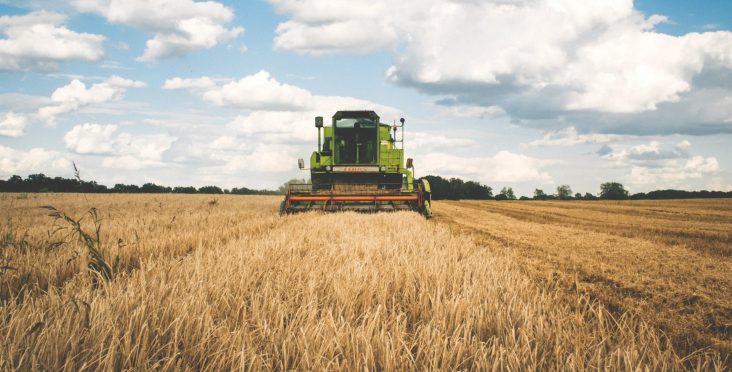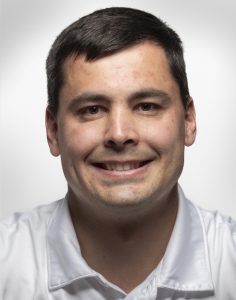New UA ag economist to help farmers assess risk
by January 9, 2024 11:40 am 708 views

Volatile weather patterns, fueled by climate change, geopolitical strife like the Russian invasion of Ukraine, spiraling commodities markets, and other factors impact farmers each season. They have to weigh these risk factors when deciding what crops to grow.
A new economist with the University of Arkansas System Division of Agriculture is doing research to help farmers assess those risks.
“Any farmer will tell you that farming is a lot like gambling,” said Andrew Anderson, assistant professor of agricultural economics and agribusiness for the University of Arkansas System Division of Agriculture. “To be able to have policies that are created understanding that risky environment is really important.”
Anderson investigates the role of risk in decisions throughout the agricultural supply chain. He said he is hoping his research will improve policy-making decisions and help farmers and others develop strategies to manage risky environments.
Risk can come from various sources for agricultural producers, Anderson said. Two especially significant factors are uncertainty in the final price and production quantity — price risk and production risk. Farmers make production decisions long before they know the price, and uncontrollable variables such as weather make it difficult to predict production outcomes.
Some economics research assumes risk is not a factor, which might not provide an entirely realistic scope, Anderson said. The economists who work specifically on risk help offer a more complete picture of the economic environment.

Anderson joined the University of Arkansas System in August and conducts research for the Arkansas Agricultural Experiment Station, the research arm of the Division of Agriculture. He also teaches classes through the Dale Bumpers College of Food, Agricultural and Life Sciences at the University of Arkansas.
“Agriculture is such a unique industry,” Anderson said. “As long as we have people on the planet to feed, improving the production and distribution of that food can have a real impact on people’s lives.”
John Anderson, head of the agricultural economics and agribusiness department, is glad Anderson joined the department because of his extensive background in applied research related to commodity price behavior and risk management.
“His experience and expertise are an excellent fit for the issues and challenges that we face in agriculture here in Arkansas, and his skill set is a great complement to the personnel that we already have in place in the department,” he said. “I look forward to seeing the contribution that Andrew will be able to make across all of the mission areas of the department.”
Part of Anderson’s research focus relates to the intersection of government policy and producer risk. One of his ongoing projects aims to determine how drought insurance impacts the demand for pastureland. Drought insurance, officially known as Rainfall Index Pasture, Rangeland and Forage insurance, helps protect a producer’s operation from the risk of forage loss due to lack of precipitation. Anderson said government policy interacts with the price and quantity of pastureland in interesting ways.
Government policy may have unintended consequences, Anderson said. For example, policy makers might design a program to benefit livestock producers by reducing risk. However, if much of the value of the program is capitalized into land values, the large share of producers who rent land won’t benefit as rental rates increase and the benefits go to landlords.
Anderson’s projects also explore volatility in the cattle futures market, which helps with price discovery and risk management. Through the futures market, people buy and sell contracts settled at a future date, Anderson explained. There are concerns that cattle futures markets experience excessive volatility, due to a variety of factors. Anderson’s research aims to address the source of this volatility and find the impact of excess volatility on price discovery and risk management for cattle producers.
Cattle producers use the futures market to hedge against large price movements. A volatile futures market makes it difficult to accomplish this goal. Volatility could also spill over into local cash markets, increasing uncertainty and risk even for those who don’t use futures contracts as a hedge.
In addition to cattle market projects, Anderson said he plans to expand his research to other Arkansas agricultural commodities , such as poultry and rice. Anderson hopes his research will support stakeholders in Arkansas and the land-grant mission.
To aid farmers, economists including Anderson, will host four risk-management workshops in January and February. The agendas will cover livestock and row crop production depending on location.
“The farm workshops really give us an opportunity to get more in depth in really important topics,” Anderson said. “In our one-off smaller production meetings, we can get into the current situation and outlook and give a sense of where the markets are, but it’s harder to get in-depth with topics such as risk management strategies, assessment of financial statements and evaluating crop insurance products.”
“The workshop format just allows us to put a lot more meat in the program than we otherwise could,” he said.
The Fryar Price Risk Management Center of Excellence in the Department of Agricultural Economics and Agribusiness at the University of Arkansas was established in 2020 with a gift from Ed and Michelle Fryar. The center’s work focuses on critical risk management issues facing the food and fiber system, with particular emphasis on products and industries contributing significantly to the Arkansas economy.
The four workshops will be held in four Northeast Arkansas cities. One will be held Jan. 10 at the Food Bank of Northeast Arkansas in Jonesboro. A second will be held Jan. 11 at the Rice Research and Extension Center in Stuttgart. A third will be held Feb 1 at the Corn and Grain Sorghum Producers Building at the Jackson County Extension Center in Newport. The last will be held Feb. 2 at the White County Extension Office in Searcy.
